Elder Scrolls V: Skyrim – Review
by Mark R
|
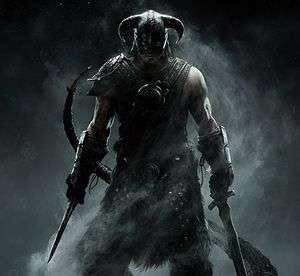 There are few games which, years after release, remain the benchmark against which all other games within that genre are measured. Back in 2002 it was The Elder Scrolls III: Morrowind that set the role playing fanatics’ tongues wagging over the vast gameplay world and the level of detail afforded to the player when it came to characterisation and in-game back story. Then, as expected, the release of Oblivion in 2006 not only gave the industry a new benchmark, but ignited a civil war within the Elder Scrolls fan base over which was the better of the two titles, with some still citing Morrowind as the best that the role playing genre has to offer while others flew the flag for the more technologically advanced Oblivion. What, then, does the release of the fifth installment, Skyrim, hold for the pundits when it comes to throwing out the obligatory RPG comparisons in the coming years?
There are few games which, years after release, remain the benchmark against which all other games within that genre are measured. Back in 2002 it was The Elder Scrolls III: Morrowind that set the role playing fanatics’ tongues wagging over the vast gameplay world and the level of detail afforded to the player when it came to characterisation and in-game back story. Then, as expected, the release of Oblivion in 2006 not only gave the industry a new benchmark, but ignited a civil war within the Elder Scrolls fan base over which was the better of the two titles, with some still citing Morrowind as the best that the role playing genre has to offer while others flew the flag for the more technologically advanced Oblivion. What, then, does the release of the fifth installment, Skyrim, hold for the pundits when it comes to throwing out the obligatory RPG comparisons in the coming years?
The original teaser trailers for Skyrim were, unsurprisingly, less than vague and served more as a means to generate media hype than throw the well established fans any bones, dragon or otherwise. Their goal was achieved within seconds, however, as the social media channels were instantly ablaze with links to YouTube and hurried re-badged postings on various gaming sites. The battle for Skyrim hype was won before it had even started.
With a somewhat limited availability for the first thirty minute preview presentations held at last year’s E3, the rush for placements resulted in some extremely satisfied journalists, along with a great deal more left wanting. Thankfully, we were lucky enough to take our place in the behind-closed-doors walkthrough with Todd Howard as he surprised most of the attendees by opting to showcase their latest endeavour, and their new Creation Engine, on the considerably under-powered Xbox 360 rather than the souped up gaming rig that I, for one, had expected. From that point on, my love of the Elder Scrolls was further reinforced and the game I was most looking forward to for 2011 was, without question, Skyrim.
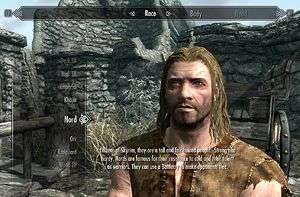 As is always the case when you first lay hands on something that you’ve been yearning for, be it the latest CD from your favourite band or a greatly anticipated movie, there is more than a smattering of hesitation and the excitement turns to trepidation as questions begin to circle in the mind: “what if the presentation was orchestrated to make the game look better?”, “what if those beautiful textures were actually on a PC with an Xbox controller?”. With copy in hand and a gaming laptop salivating as much as an inanimate collection of components possibly could, the time had come to answer those questions and discover if Skyrim was everything that it had promised to be.
As is always the case when you first lay hands on something that you’ve been yearning for, be it the latest CD from your favourite band or a greatly anticipated movie, there is more than a smattering of hesitation and the excitement turns to trepidation as questions begin to circle in the mind: “what if the presentation was orchestrated to make the game look better?”, “what if those beautiful textures were actually on a PC with an Xbox controller?”. With copy in hand and a gaming laptop salivating as much as an inanimate collection of components possibly could, the time had come to answer those questions and discover if Skyrim was everything that it had promised to be.
Your journey begins, as you’d expect, with the character creation side of things and, for some reason, the typical hour or so of tweaking to get it just right was instead over within perhaps ten minutes. There weren’t fewer customisation options than with previous games but, for whatever reason, my character reached perfection much quicker than expected, which is probably just as well given the three hundred hours of gameplay being touted by Bethesda. When you’re expected to put in the equivalent of more than eight weeks of working a full time job just to complete a game, you hardly want to spend that much time with a character that never quite ticked all the boxes or waste the best part of a day achieving character satisfaction.
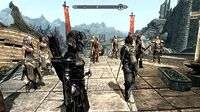 |
 |
 |
 |
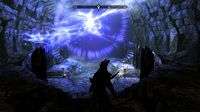 |
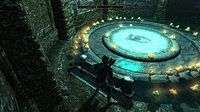 |
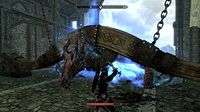 |
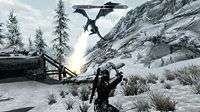 |
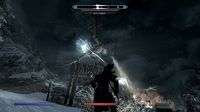 |
Breaking away from what has become the staple of most modern games, especially those within the RPG genre, Skyrim throws your character into the heart of the action from the start, with no tutorial level in sight. While some may find fault with the lack of initial hand-holding, it served to create a more immersive atmosphere by forcing the player to roll up their sleeves and just get on with it which, let’s be honest, is something that more developers should perhaps consider. With that in mind, the first hour of gameplay need not be spent wearing a sack cloth and fending off enemies with a wooden stick, as the first scene offers a veritable feast of armour and weaponry, making for a much more enjoyable introduction to the snow-capped northern most region of Tamriel.
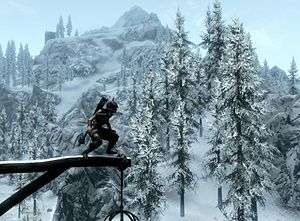 Aesthetically, the province of Skyrim is quite stunning, although you’d be forgiven for mistaking the under-saturated palette for a bland environment. The truth is, however, that the level of detail and effort that Bethesda have gone to with the architecture and landscaping is incredible and, when you’re fortunate enough to stumble upon an area where the snow has yet to fall, the sheer beauty becomes quickly apparent. As with Bethesda’s previous RPG behemoth, Fallout 3, the somewhat monotone feel will undoubtedly turn some people off if they’re expecting the same sort of eye candy they’d previously enjoyed with the rolling hills and lush valleys of Oblivion but, much like Fallout 3, the tiniest details do make all the difference to the ambience if you pay attention to everything around.
Aesthetically, the province of Skyrim is quite stunning, although you’d be forgiven for mistaking the under-saturated palette for a bland environment. The truth is, however, that the level of detail and effort that Bethesda have gone to with the architecture and landscaping is incredible and, when you’re fortunate enough to stumble upon an area where the snow has yet to fall, the sheer beauty becomes quickly apparent. As with Bethesda’s previous RPG behemoth, Fallout 3, the somewhat monotone feel will undoubtedly turn some people off if they’re expecting the same sort of eye candy they’d previously enjoyed with the rolling hills and lush valleys of Oblivion but, much like Fallout 3, the tiniest details do make all the difference to the ambience if you pay attention to everything around.
Waterfalls, for example, are not only remarkably lifelike in terms of the realism with the water, but if you happen to take time out to look around on your travels, you may spot a few salmon leaping the falls. For someone who craves such details from a developer, seeing my first salmon leap was perhaps the most significant “wow” moment from the minutiae on display, and it shows how much care and attention is afforded to something which, to most gamers, would be entirely insignificant yet which serves to deliver a much more organic and believable world. How, then, would Bethesda take this world and make it more than just something beautiful to gawk at?
One of the first things that hits you with Skyrim, moreso than with other Elder Scrolls titles, is that it’s so much more than just a main questline with a series of guild quests and side quests thrown in to eke out the reported gameplay hours. Where one would expect a collection of non-related missions to appease specific individuals for an eventual rise in the ranks, each of the guilds has its own solid arc with some hefty back story and, for the most part, a satisfyingly meaty conclusion. The questline for the Thieves Guild alone managed to swallow a good twenty hours – longer than most games’ single player campaigns – and never once crossed the line from being genuinely interesting to shoe-horned tedium and, although the ultimate reward from completing this particular quest and returning the Thieves Guild to its former glory wasn’t exactly suitable for my ask-questions-later heavy armour character, it was a joy to follow through to its final conclusion.
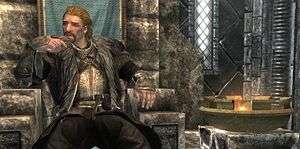 While the main quest itself carries with it a certain significance and a strong sense of purpose, where it is your legacy to carry out what is required of you, it was, as with the previous Elder Scrolls release, less engaging than it could have been when you consider that the main quest is supposed to be the central narrative thread. That’s not to say that there was anything intrinsically wrong with the story itself, just that the other quests were more entertaining and satisfying overall.
While the main quest itself carries with it a certain significance and a strong sense of purpose, where it is your legacy to carry out what is required of you, it was, as with the previous Elder Scrolls release, less engaging than it could have been when you consider that the main quest is supposed to be the central narrative thread. That’s not to say that there was anything intrinsically wrong with the story itself, just that the other quests were more entertaining and satisfying overall.
The civil war storyline, following the uprising of Ulfric Stormcloak against the Imperial Legion, may have been more of a series of hack and slash missions than anything requiring any degree of thought and consideration, but it did manage to evoke a real sense of genuine achievement on completion, thanks to the heartfelt speech from Ulfric after the conclusion had been reached. Picture those speeches given by Mel Gibson as Braveheart or Bill Pullman in Independence Day but without the Hollywood pomp and nauseating patriotic sycophancy and you have the sense of belonging that Ulfric’s speech manages to stir within.
Something which does has a negative impact on the immersion factor is the voice acting. Not that there’s anything necessarily wrong with the acting, and the main cast do a stellar job of their respective characters, but the repetition of what can only really be described as “dodgy Schwarzenegger impressions” does quickly remind you that the non-quest-related NPCs are, more often than not, going to be clones and the strong Nordic regional accent makes this all the more obvious. The quest-related acting, however, is well considered and expertly delivered by all actors concerned, and the quality of the vocal recordings really is second to none where the ambience of each particular area is perfectly represented, with interior vocals having just enough reverb to mimic reality, open air vocals being suitably dry and caves and halls having a believable amount of delay that the fourth wall is rarely, if ever, broken – a welcome change from the sporadic audio inconsistencies of Oblivion.
 |
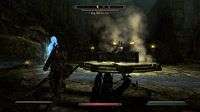 |
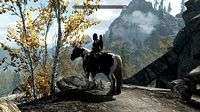 |
 |
 |
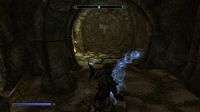 |
Some of the more obvious changes and advances from Skyrim’s predecessor come from the use of the new Creation Engine although, if I had to be honest, I’d say that a fair amount of what I’d seen in the 110 hours of gameplay thus far would suggest that it may actually be a heavily modified, or partially rewritten, Gamebryo engine rather than an entirely new entity altogether. The similarities to both Oblivion and Fallout 3 in terms of the way scenes are handled is quite remarkable and it’s highly unlikely that anyone writing a new engine from the ground up would mimic so many aspects in such a meticulous manner, and a quick delve into the PC console commands would suggest the same, with many of the commands being identical to those used within its predecessors..
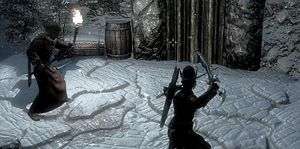 A welcome introduction to the Elder Scrolls universe from Fallout is the on-screen discovery notification when new areas are arrived at, bringing a sense of accomplishment after following a map marker and traipsing across the rocky terrain. The lock picking has also been changed from the cross section style of Oblivion and instead resorts to the two-handed click and turn method used in Fallout 3 so it’s more difficult than before but with an edge of realism that wasn’t there with the previous tumbler approach.
A welcome introduction to the Elder Scrolls universe from Fallout is the on-screen discovery notification when new areas are arrived at, bringing a sense of accomplishment after following a map marker and traipsing across the rocky terrain. The lock picking has also been changed from the cross section style of Oblivion and instead resorts to the two-handed click and turn method used in Fallout 3 so it’s more difficult than before but with an edge of realism that wasn’t there with the previous tumbler approach.
Levelling up in Skyrim is something to behold. Gone are the quick stat screens that would previously pop up after reaching the required XP for the next level, and subsequent nap. The nap is no longer required and an on-screen notification lets you know that you’re free to progress to the next level, and it’s at this point that the Nordic flavour is ramped up as you’re presented with a series of star constellations which represent each of the available skills, and the perks therein. Starting at the bottom, each of the stars within a constellation can only be unlocked if the prerequisite level of that particular skill has been reached and the previous perk on the tree has been selected, so it’s not possible to skip one perk to jump straight to another. With the Heavy Armour constellation, for example, the “Conditioning” perk, which renders all worn heavy armour weightless, requires a heavy armour skill level of 70 but will still be unattainable even if you’d reached a skill level of 100 if the previous “Cushioned” perk has yet to be unlocked.
This method of levelling is interesting and, at first, seemed like there would be less thought involved than with the level progression in previous games. Contrary to that, however, it made for some serious moments of contemplation when a constellation has severe perk branches, such as the ‘v’ shaped heavy armour skill, as it meant that selecting one branch for maxing out would then force the other branch to start from the bottom, thanks to the in-built prerequisites. Ultimately, it made for a more interactive experience and was rewarding every time one of the constellations was entirely illuminated. Professor Sagan would have been proud.
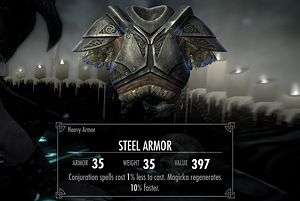 With so much effort afforded to the new levelling system, it was a shame to see the newly introduced crafting system fall short of what it could have been. On the face of it, the concept is solid and having to prepare raw components before they can be used for crafting, such as taking hide and converting to leather before taking it further by producing leather strips, does add an element of detail that is missing from other games, but it doesn’t quite cut the mustard. While it’s possible to unlock various weapon and armour types by increasing the Smithing skill and exposing each of the options in the perk tree, there is still a very limited number of items available to manufacture.
With so much effort afforded to the new levelling system, it was a shame to see the newly introduced crafting system fall short of what it could have been. On the face of it, the concept is solid and having to prepare raw components before they can be used for crafting, such as taking hide and converting to leather before taking it further by producing leather strips, does add an element of detail that is missing from other games, but it doesn’t quite cut the mustard. While it’s possible to unlock various weapon and armour types by increasing the Smithing skill and exposing each of the options in the perk tree, there is still a very limited number of items available to manufacture.
In some instances, it’s possible to have two separate grades of armour per type, such as Dragonscale and Dragonplate, but the possibilities end there so a heavy armour character would only have one option when it comes to manufacturing within the Dragon Smithing perk – the Dragonplate armour. Weapons can be upgraded on a grindstone, providing you have the necessary manufacturing components relating to the weapon itself, while the workbench is responsible for armour upgrades but, again, further component parts are necessary.
As a stat whore, it does make for some interesting gameplay when potions are used to temporarily enhance the smithing skill, coupled with specially-enchanted apparel, and take all armour and weaponry to the highest possible level. The Enchanting skill can be applied to further enhance weapons as well as armour, jewellery and regular clothing. It is, of course, possible to over-enchant weapons to the point where certain enemies are almost certainly taken out with one hit, and armour can be improved to protect from even the most severe attacks but it rarely detracts from the enjoyment and thrill of the combat.
 |
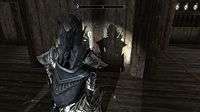 |
 |
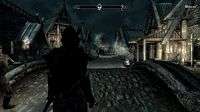 |
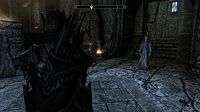 |
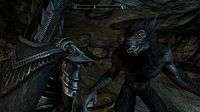 |
Strategically speaking, the combat in Skyrim is a vast improvement on earlier Elder Scrolls games and a sense of realism has been injected, well as real as you can possibly get when calling for a rain of fire from above. Archery, for example, now goes beyond quickly flicking the trigger and sending a flurry of arrows towards your foes, so each shot will take longer, much like it would for any of us to grab an arrow from a quiver and slide it into position before pulling back on the bow-string, but the resulting impact causes considerably more damage.
If it’s damage that you’re after, then sneak mode is by far the best way to go about your kills. Under normal circumstances, a sneak kill can produce a 6x damage multiplier and, in some cases, result in instant death. With certain weapons or enchantments it’s possible to bring that damage multiplier up to a ridiculous 30x which, as if it needs saying, will almost certainly provide you with an immediate kill every time.
 Melee fighters will undoubtedly notice that opponents can now become disoriented when they come under attack, stumbling and allowing for additional strike opportunities, and none are quite as impressive as the new dual wield system. Having favoured a dual wield method in other RPG games, this was something that was more than welcome and was immediately put to good use and the typical shield/sword combination was never given a consideration. For those craving a more cinematic approach to kills, the introduction of finishing moves serve to provide a sense of achievement after some heavy combat, although the camera position tends to backlight the scene and therefore has a tendency to kill much of the detail or move too quickly to savour the moment.
Melee fighters will undoubtedly notice that opponents can now become disoriented when they come under attack, stumbling and allowing for additional strike opportunities, and none are quite as impressive as the new dual wield system. Having favoured a dual wield method in other RPG games, this was something that was more than welcome and was immediately put to good use and the typical shield/sword combination was never given a consideration. For those craving a more cinematic approach to kills, the introduction of finishing moves serve to provide a sense of achievement after some heavy combat, although the camera position tends to backlight the scene and therefore has a tendency to kill much of the detail or move too quickly to savour the moment.
Magical combat looks to have had a complete overhaul from previous releases, allowing for a more interactive approach whereby holding down the trigger will turn a firebolt into what can only be described as a flamethrower effect, and turning the targeting to the ground will transform the effect into a proximity-type attack where the spell will sit on the surface until an enemy comes close enough to trigger the damage. Overall, I would say that the spell-casting has been enhanced more than the other combat styles although it’s something which didn’t affect my own particular gameplay much as a close-combat heavy armour character, and there are still a great number of spells which have yet to be learned, such as telekinesis, mainly through not yet finding a suitable vendor.
Earning money in Skyrim is more difficult than expected, with very few items coming close to the values of the Daedric artefacts from Oblivion, so building up that bank balance to buy property can be a real chore, especially with so many areas having no enemy/chest respawns. In lieu of being able to constantly loot Oblivion’s Fort Nykol, or turn up and empty the plethora of crates in the Imperial City, the quickest way to generate funds tends to be through weapon and armour manufacturing… provided you have the necessary leather and ingots, of course. Having spent so much time scraping by in Fallout 3, the achievement for amassing a wealth of 100,000 Septims in Skyrim wasn’t quite as tedious as it could have been, but there were times when buying a particularly tasty enchanted weapon was just out of reach and there were no quick fixes available in terms of revenue stream.
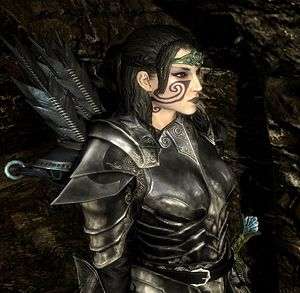 Looting bandit camps or, if you’re up to the challenge early on, clearing out a Vampire den will generally result in a decent amount of swag but, unless you’ve been spending all your level up points on stamina, there’s not much room for loot before becoming over-encumbered… unless you have a companion, of course. Companions have been brought over from Fallout 3, which means that you’re either going to have to keep asking them to wait while you stealth your way into a particular area or risk having them run ahead like a chav tearing towards the sale section of the local off license. The real beauty of the companions, however, is their unlimited carrying capacity. Trading items with them will result in your stash taking up valuable space within their inventory but instructing them to pick up the loot of their own accord using the command option will allow them to add items on a seemingly unlimited basis. I say “seemingly” as I ran out of patience testing this theory.
Looting bandit camps or, if you’re up to the challenge early on, clearing out a Vampire den will generally result in a decent amount of swag but, unless you’ve been spending all your level up points on stamina, there’s not much room for loot before becoming over-encumbered… unless you have a companion, of course. Companions have been brought over from Fallout 3, which means that you’re either going to have to keep asking them to wait while you stealth your way into a particular area or risk having them run ahead like a chav tearing towards the sale section of the local off license. The real beauty of the companions, however, is their unlimited carrying capacity. Trading items with them will result in your stash taking up valuable space within their inventory but instructing them to pick up the loot of their own accord using the command option will allow them to add items on a seemingly unlimited basis. I say “seemingly” as I ran out of patience testing this theory.
The companions do have their own purpose though, and have proven to be particularly useful for drawing out enemies who would otherwise be skulking around in the shadows, waiting to ambush. They do, as you’d expect, take a considerable amount of satisfaction and effort away from the combat scenarios however, and there are times when a quick-thinking companion could rush ahead and take out enemies before you’ve even unsheathed your sword. On learning that the companions were being introduced to Elder Scrolls, it was surprising to see that they didn’t come with their own specialised perks as they did with Fallout 3. This meant that selecting a companion became nothing more than a question of aesthetics rather than tactics, making it slightly disappointing and an almost-inconsequential inclusion.
 Another disappointment was the lack of hot-swapping with the d-pad. While it was possible to switch weapons, potions, spells or even armour with a quick flick of either of the eight positions in Oblivion, this has been removed entirely with the only way to quickly access your inventory through the ‘down’ position, which brings up whichever items you’ve selected as a favourite. If you’ve not added a particular item to your favourites and you want to switch quickly during a combat session, then you’ll have to go through your entire inventory and, in fact, even if you have classed it as a favourite… you’re still expected to scroll through what could quite easily be a heavily-populated menu. In terms of overall gameplay, this is perhaps the only real negative… but it’s a huge negative.
Another disappointment was the lack of hot-swapping with the d-pad. While it was possible to switch weapons, potions, spells or even armour with a quick flick of either of the eight positions in Oblivion, this has been removed entirely with the only way to quickly access your inventory through the ‘down’ position, which brings up whichever items you’ve selected as a favourite. If you’ve not added a particular item to your favourites and you want to switch quickly during a combat session, then you’ll have to go through your entire inventory and, in fact, even if you have classed it as a favourite… you’re still expected to scroll through what could quite easily be a heavily-populated menu. In terms of overall gameplay, this is perhaps the only real negative… but it’s a huge negative.
Graphically, other reviewers have reported that Skyrim isn’t much of an improvement on Oblivion but, as a shameless graphic whore, I have to vehemently disagree with this. Granted, this review is based on the PC version and will therefore look as good or bad as the system running it, but even the lowest common denominator of the typical current gaming systems, the Xbox 360, has graphics which would make Oblivion weep Garridan’s tears.
The meshes themselves are smoother than its predecessor, and the sculpted detail on the character faces (human or otherwise) is truly spectacular, given the limitations of the Xbox hardware. Textures could certainly be improved upon but it’s obvious that these were kept to a workable size in order to retain a decent frame rate across the board, although I imagine the PC modding community will soon be buzzing with various texture upgrades. Overall, the number of occasions where quest-urgency went out of the window in favour of spectating whatever eye candy was on display certainly cannot be counted on the fingers of several dozen hands… and the skies… oh, the skies. Never has the virtual equivalent of aurora borealis been so beautiful and realistic, as my screenshot folder will attest to. As one who has always strived for the best possible graphics from their PC system, with none ever coming close to the gasps from running Crysis with everything ramped up, Skyrim has successfully knocked it off its perch, in terms of sheer beauty.
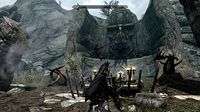 |
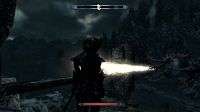 |
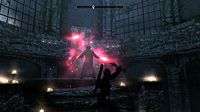 |
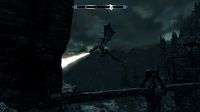 |
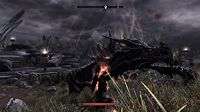 |
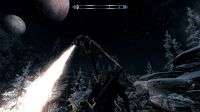 |
 |
 |
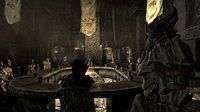 |
As far as the music is concerned, the orchestral score is exactly what you’d expect from the master that is Jeremy Soule. The anthemic theming from Oblivion is present enough to provide that familiar comfort while, at the same time, varied enough to represent the progress of having two hundred years pass from the point where Oblivion ended. The initial response to the opening theme was that it didn’t have that rousing swell which evoked a strong sense of pride and had you reaching for your sword and shield but, once the expectation of the previous scores subsides, it’s very easy to fall in love with it.
So, for a game that has been on the cards since 2006, the wait is finally over and the result is an incredibly detailed world with some fascinating stories under the hood. Technologically speaking, it does appear to be quite an achievement considering how well it performs on some six year old consoles but is it worthy of the acclaim it has received thus far? Yes and no. There is no doubt that Bethesda have thrown everything that they possibly could at the development process and pulled out all the stops to ensure that it’s more than just a standard game being eked out to last some three hundred hours, and there is certainly always something to do thanks to the Radiant questing, but longevity is more than just having something to do. There has to be a draw for the player, and that’s where Skyrim may actually fall down.
Regardless of the beauty, the depth of conversation on offer, the beautifully woven storylines and sense of achievement from completing each of the various guild quests, there is an absence of something in Skyrim and it’s difficult to pinpoint exactly what that is. No matter what, though, it’s far from being a game breaker and the fifth Elder Scrolls outing has proven once again that Bethesda are at the top of their game in terms of pushing all the right buttons with the RPG genre.
Pros- Improved combat adds a degree of realism
- Guild quests display great story telling
- Graphics are, for the most part, truly stunning
- Strong attention to detail, from texturing to various objects scattered throughout the world
- Mario plays a dragon
- Distinct lack of 'something' throughout
- Wasn't able to hold my attention beyond 110 hours, sadly
- Schwarzenegger guy is too obvious to be so prevalent, somewhat killing the immersiveness
- No use of the d-pad for weapon/armour/potion hotkeying
Skyrim does everything that it was expected to, and it appears to live up to its hype. With some of the most beautiful surroundings and a meticulous attention to detail, there is always something to tease the eye and prompt pause for reflection. The quest lines and the conversations woven throughout have enough of a draw to hold the attention and, for the most part, are rewarding enough to have made the effort worthwhile. While the main quest is lacking when compared to others, it seems to be par for the course with most RPGs these days, but the thrill of taking down that first dragon is something that will stick with me for quite some time.
The problem with Skyrim overall is that it lacks soul. Having completed Oblivion and Fallout 3 several times, there is still a certain magic that would entice me to do the same again and there wouldn't be much in the way of reluctance, but I'm not sure that I could actually play through Skyrim again... even though there's not actually anything wrong with it as a complete package. The same could be said when it comes to scoring the game - while there's nothing that I could actually fault the game for, and there were certainly no bugs from what I could see, I can't base the score on technical merit alone. After completing the quests for the Thieves' and Mages' Guilds, and with only a total of 110 hours under my belt, I have lost the compulsion to continue playing. It could be that maxing out all of the achievements have left me with nothing else to strive for but, as someone who doesn't normally care for achievements, I know this not to be the case.
So, to answer the original questions... yes, it most certainly lived up to its hype and, in my opinion, Skyrim is the new benchmark against which all RPGs will be measured. It's a fantastic game, with an incredible amount to do and a beauty the likes of which has yet to be seen on current consoles, but there is a distinct lack of magic in Skyrim and so, with a reported 190 hours of gameplay remaining, the interest has already waned. What's important, however, is that it took the equivalent of twenty playthroughs of most modern single player campaigns for that to happen. The fact that this pains me as I genuinely want to continue playing is a testament to how good it actually is.
Last five articles by Mark R
- From Acorns to Fish
- Alone In The Dark
- Why Borderlands is Better Than Borderlands 2
- Falling Short
- The Division: A Guide to Surviving the Dark Zone Solo















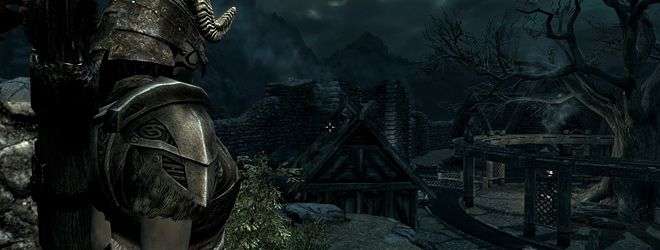
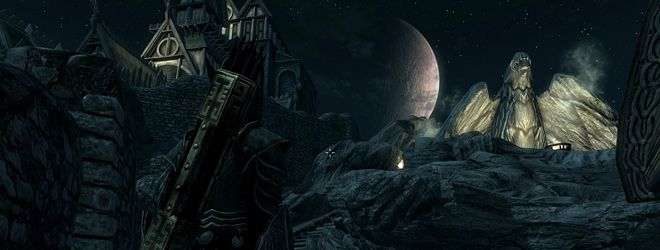
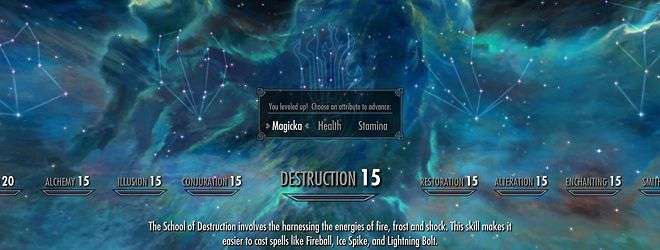
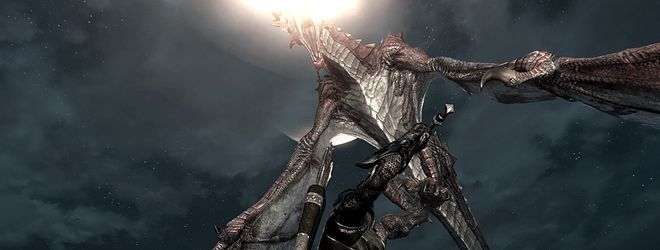

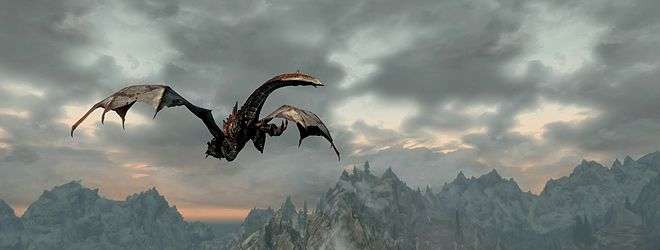






All sorts of unfuckwittable. Seriously, this game only needs one review. This one. Incredibly detailed. Well done.
This review blew what’s left of my fragile mind. Ace job chief.
Good work giving an in-depth review a while after release rather than fapping furiously in the few weeks afterwards.
On a par with Portal 2 (I really can’t separate them for a number of reasons). As a result one of the best games of recent history. So good to see the RPG back on its throne.
What Skyrim is missing is the power and emotional weight that a more focused story can provide.
It’s still a masterpiece, but I’m struggling to see how a game designed in this way can ever give the gutpunch or narrative twist that something like BioShock, Alan Wake or Heavy Rain can. It feels like we can either have one or the other.
[...] Skyrim? Love modding? Love it when someone can take what the developer provided and turn it into [...]